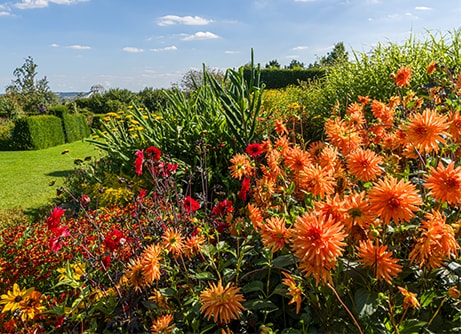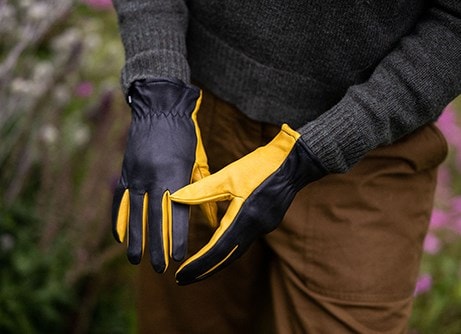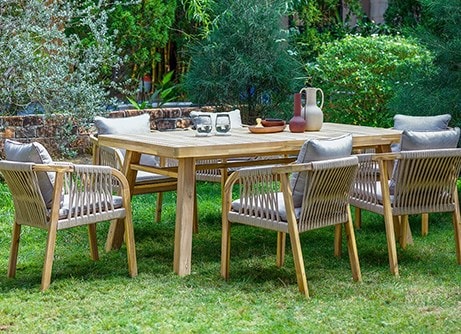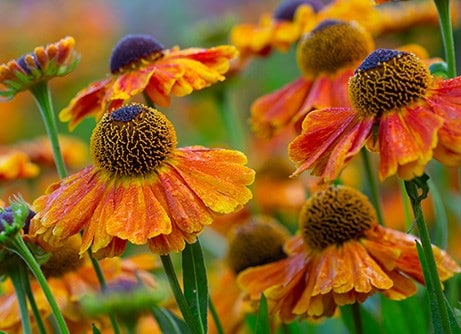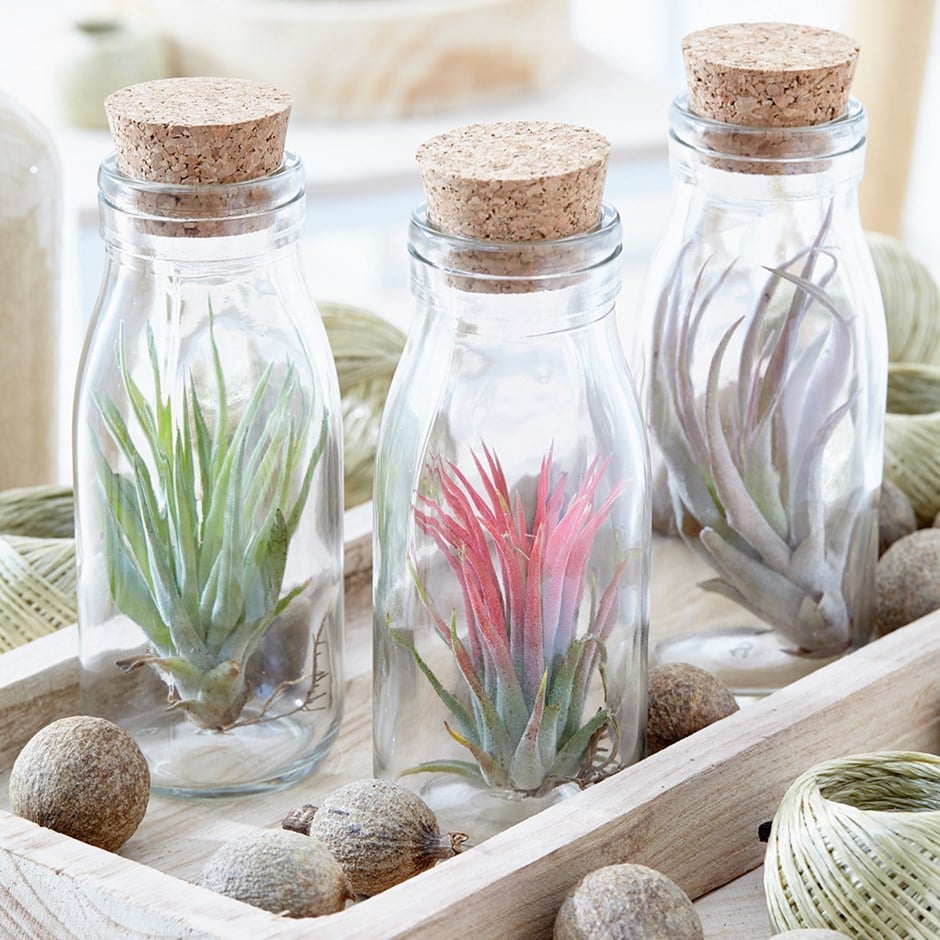
Often referred to as air-plants, these tender evergreen perennials originate from central and southern America, where they're found growing on tree branches or rocks. Forming part of the bromeliad family, their tufted habit and ability to absorb water and nutrients through their foliage, makes them enchanting and easy-care additions to an indoor collection.
Tillandsia abdita: Gradually forming a rosette of slightly curled, slender leaves, which turn an intense shade of red as the plant is about to flower, this tillandsia is hailed as being one of the most brightly coloured varieties.
Tillandsia ionantha: This popular air plant forms a cluster of bristly silver-grey leaves, which take on a bright red flush as it comes into flower. In its native environment (tropical and subtropical forests), these tubular violet-purple flowers attract hummingbirds, but as they are relatively small and usually tucked into the central crown, they are usually pretty difficult to spot.
Tillandsia multiflora: The smooth green leaves of this great little air plant sometimes have a reddish flush, which becomes really quite pronounced when the plant is about to flower. It's primarily grown for this colourful foliage as the flowers are very small - but it is also incredibly easy and undemanding, which makes it perfect for the novice gardener.
Tillandsia abdita: Gradually forming a rosette of slightly curled, slender leaves, which turn an intense shade of red as the plant is about to flower, this tillandsia is hailed as being one of the most brightly coloured varieties.
Tillandsia ionantha: This popular air plant forms a cluster of bristly silver-grey leaves, which take on a bright red flush as it comes into flower. In its native environment (tropical and subtropical forests), these tubular violet-purple flowers attract hummingbirds, but as they are relatively small and usually tucked into the central crown, they are usually pretty difficult to spot.
Tillandsia multiflora: The smooth green leaves of this great little air plant sometimes have a reddish flush, which becomes really quite pronounced when the plant is about to flower. It's primarily grown for this colourful foliage as the flowers are very small - but it is also incredibly easy and undemanding, which makes it perfect for the novice gardener.
How to care for Tillandsia multiflora:
These plants do need a humid environment to thrive, so a bright bathroom or steamy kitchen would be ideal. Misting with water a couple of times a week usually supplies sufficient water, although additional watering may be required in a dry hot environment. Remember to shake off any excess water though as they dislike overwatering and should never be allowed to sit in water for any length of time. Loosely place the cork or remove it periodically to let fresh air in to improve ventilation and avoid any rot setting in.
If possible use rain water, especially in hard water areas, and never use water from a water softener.
If possible use rain water, especially in hard water areas, and never use water from a water softener.
Eventual height:
0.2m
Eventual spread:
0.2m
Position:
Bright, indirect light
Rate of growth:
Slow growing
Hardiness:
Frost tender
Product options

Tillandsia abdita (beige in photo)
£12.99
In stock
(shipped within 1-2 working days)
(shipped within 1-2 working days)

Tillandsia multiflora (green in photo)
£14.99
In stock
(shipped within 1-2 working days)
(shipped within 1-2 working days)

Tillandsia ionantha (red in photo)
£15.99
In stock
(shipped within 1-2 working days)
(shipped within 1-2 working days)

All 3 bottles
£39.97
£13.32 each
In stock
(shipped within 1-2 working days)
(shipped within 1-2 working days)
1
Delivery options (pick your preferred option at checkout)
Standard Delivery£5.99
Named Day Delivery£10.99

